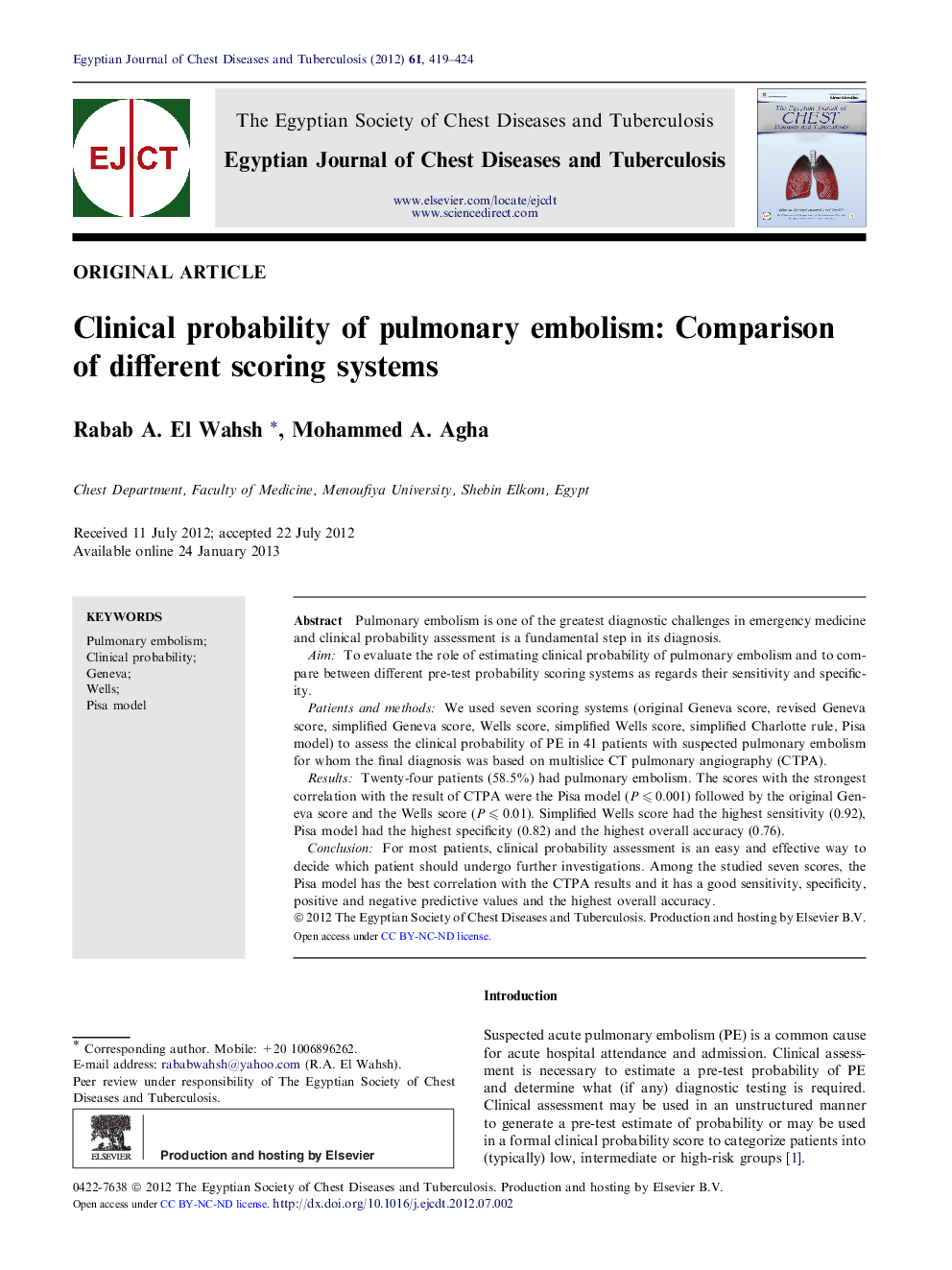| Article ID | Journal | Published Year | Pages | File Type |
|---|---|---|---|---|
| 3400285 | Egyptian Journal of Chest Diseases and Tuberculosis | 2012 | 6 Pages |
Pulmonary embolism is one of the greatest diagnostic challenges in emergency medicine and clinical probability assessment is a fundamental step in its diagnosis.AimTo evaluate the role of estimating clinical probability of pulmonary embolism and to compare between different pre-test probability scoring systems as regards their sensitivity and specificity.Patients and methodsWe used seven scoring systems (original Geneva score, revised Geneva score, simplified Geneva score, Wells score, simplified Wells score, simplified Charlotte rule, Pisa model) to assess the clinical probability of PE in 41 patients with suspected pulmonary embolism for whom the final diagnosis was based on multislice CT pulmonary angiography (CTPA).ResultsTwenty-four patients (58.5%) had pulmonary embolism. The scores with the strongest correlation with the result of CTPA were the Pisa model (P ⩽ 0.001) followed by the original Geneva score and the Wells score (P ⩽ 0.01). Simplified Wells score had the highest sensitivity (0.92), Pisa model had the highest specificity (0.82) and the highest overall accuracy (0.76).ConclusionFor most patients, clinical probability assessment is an easy and effective way to decide which patient should undergo further investigations. Among the studied seven scores, the Pisa model has the best correlation with the CTPA results and it has a good sensitivity, specificity, positive and negative predictive values and the highest overall accuracy.
